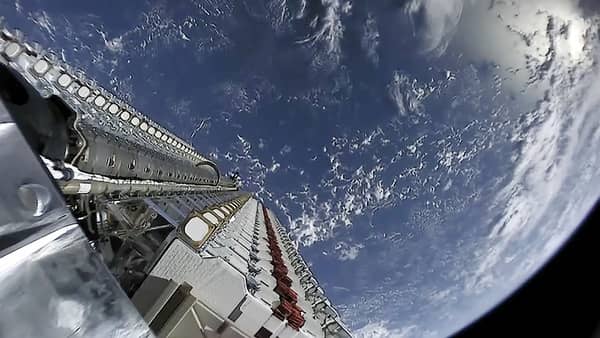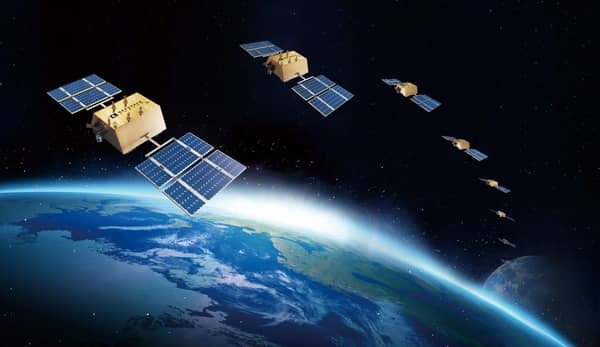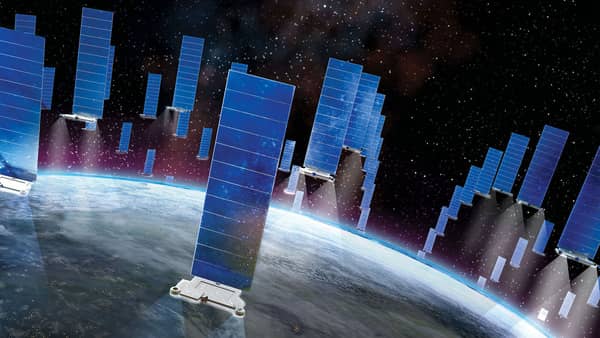
What Is a Data Processing Unit?
September 30, 2024
What Is a Spatial Computer?
October 15, 2024On this Page…
- What Are Low-Earth Orbit Internet Satellites?
- What Are the Disadvantages of Internet Satellites?
- Who Is Leading the Innovation of Low-Earth Orbit Internet Satellites?
- What Are the Latest Innovations in Low-Earth Orbit Internet Satellites?
- Conclusion
Most of the global internet is still powered by underwater cables. The transoceanic digital communication underwater fiber optic cable system is still responsible for 99% of internet connectivity, but in recent years, there have been more companies looking to further internet satellite connectivity and new innovations in the field continue to make it more viable. Low-earth orbit internet satellites look to take over the future of how we connect to the internet.

What Are Low-Earth Orbit Internet Satellites?
Low-Earth orbit internet satellites are artificial satellites that orbit the Earth at an altitude of between 100 to 1,240 miles above the Earth. These satellites are used to provide internet access to areas that are not connected to traditional ground-based infrastructure, such as remote or underserved regions. Low-Earth orbit internet satellites operate in constellations, which consist of hundreds of satellites placed in orbit at different altitudes and angles to provide better connectivity coverage.
One of the main advantages of Low-Earth orbit internet satellites is their ability to provide internet access to almost anywhere on Earth, including remote or hard-to-reach areas. They also have low latency, making them suitable for real-time communication applications such as video conferencing or even online gaming.

What Are the Disadvantages of Internet Satellites?
There are several disadvantages of low-Earth orbit internet satellites including unresponsive satellites potentially causing a collision in space. Another disadvantage of a low-Earth orbit internet satellite is the cost of launching and maintaining a constellation of satellites. This can be expensive, especially when compared to traditional ground-based infrastructure such as fiber optic cables.
While low-Earth orbit internet satellites can provide internet access to almost anywhere on Earth, the capacity of these systems is generally limited. This means that they may not be suitable for areas with high internet usage or for applications that require large amounts of data. This is one of the main reasons building the internet in space has been challenging.
There are also technical challenges related to the design and operation of low-Earth orbit internet satellites, such as power and communication issues. These can be difficult and expensive to resolve. Fixing an unresponsive or potentially broken satellite can potentially be just as difficult as it may sound.
Low-Earth orbit internet satellites can also be affected by weather conditions, such as storms or solar flares, which can disrupt the satellite signal. While low-Earth orbit internet satellites have low latency compared to geostationary satellites, they still have higher latency than traditional ground-based infrastructure. This can be an issue for applications that require real-time communication.
Low-Earth orbit internet satellites can potentially offer a good solution for providing internet access to underserved and remote areas, but there are still many challenges to overcome.

Who Is Leading the Innovation of Low-Earth Orbit Internet Satellites?
There are several companies that are currently leading the race to develop low-Earth orbit internet satellites. These companies are building and launching their own constellations of low-Earth orbit internet satellites, with the aim of providing global internet coverage.
One of the companies at the forefront of low-Earth orbit internet satellites innovation is SpaceX. Founded by Elon Musk, SpaceX has launched hundreds of low-Earth orbit internet satellites as part of its Starlink project. The company aims to provide high-speed, low-latency internet access to underserved and remote areas around the world.
Another company that is making significant progress in the low-Earth orbit internet satellites in space is OneWeb. OneWeb has launched more than 600 low-Earth orbit internet satellites and aims to provide internet coverage to remote and underserved areas.
Amazon’s Project Kuiper is also a major player in the low-Earth orbit internet satellite market. The company plans to launch a constellation of more than 3,000 low-Earth orbit internet satellites to provide internet coverage to unserved and underserved communities around the world.
In addition to these companies, there are also several start-ups that are working on low-Earth orbit internet satellite projects including Telesat. Telesat is a Canadian telecommunications company also working on low-Earth orbit internet satellites.
>>> insert Telesat quote if they get back to you <<<
The race to develop low-Earth orbit internet satellites is rapidly advancing, with several companies competing to provide global internet coverage and bring internet access to underserved and remote areas. It will be interesting to see which companies emerge as leaders in this space in the coming years.

What Are the Latest Innovations in Low-Earth Orbit Internet Satellites?
There have been various innovative developments in low-Earth orbit internet satellites in recent years. Low-Earth orbit internet satellites are now able to provide higher capacity and faster internet speeds. This is thanks to advances in technology and the use of multiple frequency bands, which allow more data to be transmitted.
These satellites can now provide coverage to a wider area, with minimal gaps in service. This is due to the use of constellations, which consist of hundreds of satellites placed in orbit at different altitudes and angles.
Low-Earth orbit internet satellites now have lower latency, which is the time it takes for a signal to travel from the satellite to the user and back again. Low latency is important for real-time communication applications like video conferencing or online gaming.
The satellites have become more reliable, with improved systems for communication, navigation, and power. This has allowed for a more consistent and uninterrupted internet connection.
The cost of launching and maintaining low-Earth orbit internet satellites has decreased significantly in recent years, making them a more cost-effective solution for providing internet access to underserved and remote areas.
These innovations have made low-Earth orbit internet satellites a more viable option for providing internet access to underserved and remote areas around the world.
Conclusion
The innovation of internet satellites will be important for how the world connects in the future. Underwater internet cables have been around since 1866 (although the 1990s brought fiber optic cables). Low-Earth orbit internet satellites are a much-needed improvement and innovation. While there are still more innovations that need to happen to make this way of connectivity the standard—low-Earth orbit internet satellites will be an important innovation for how the world continues to stay connected.

